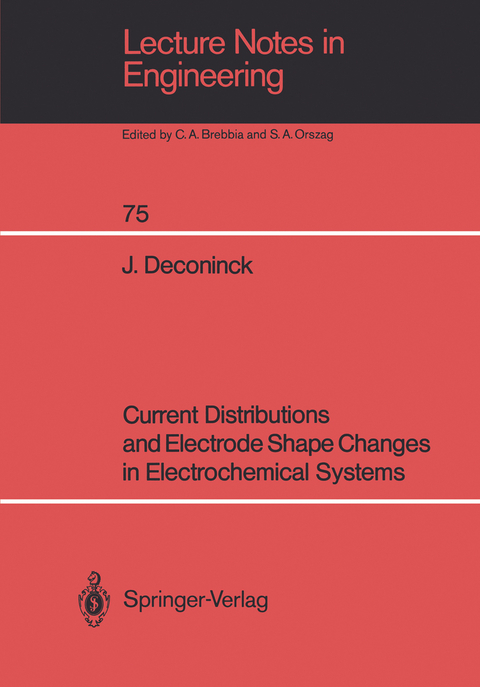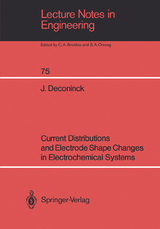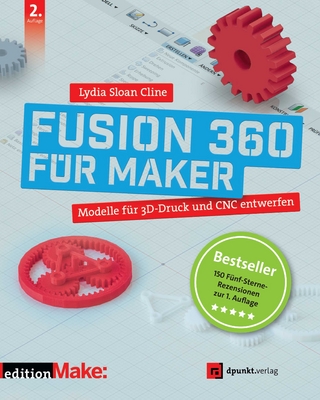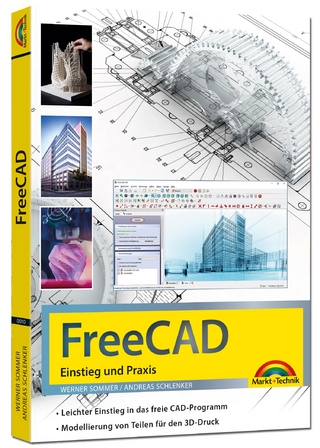Current Distributions and Electrode Shape Changes in Electrochemical Systems
Springer Berlin (Verlag)
978-3-540-55104-1 (ISBN)
1. The Current Distribution in Electro-Chemical Systems.- 1.1. Introduction.- 1.2. The electrode-electrolyte interphase.- 1.3. Transport equations in dilute solutions.- 1.4. Solution of the transport equations in dilute solutions.- 1.5. The boundary conditions of the potential model.- 1.6. Types of current distributions.- 1.7. The Wagner number.- 1.8. Electrode shape change.- 1.9. Conclusion.- 2. Solution of the Potential Model.- 2.1. Introduction.- 2.2. Hypotheses and definitions.- 2.3. Weighted residual statements for the Laplace equation.- 2.4. Solution of current distributions with trial functions satisfying the field equations.- 2.5. Solution of current distributions with trial functions not satisfying the field equations.- 2.6. Solution of current distributions based on weight functions satisfying the field equation.- 2.7. The physical interpretation of the integral equation.- 2.8. The outer normal convention..- 2.9. Indirect and regular boundary methods.- 2.10. Comparison of the treated weighted residual methods.- 2.11. Solution of current distributions by electric simulation.- 2.12. Conclusion.- 3. The Boundary Element Method to Solve Current Distributions.- 3.1. Introduction.- 3.2. Concretization of the boundary element method.- 3.3. The overvoltage equations.- 3.4. Solution of the non-linear system of equations.- 3.5. Examples.- 3.6. Copper electrorefining: numerical and experimental results.- 3.7. Conclusion.- 4. Electrode Shape Change.- 4.1. Introduction.- 4.2. The discretization with respect to time.- 4.3. The electrode shape change algorithm.- 4.4. Examples.- 4.5. Electrodeposition and electrode dissolution in copper electrorefining. Numerical and experimental results.- 4.6. Conclusion.- 5. General Conclusion.- References.- Appendices.- A.1.1 Primary current distribution along a free cathode in parallel with an anode and perpendicular to an insulating boundary.- A.1.2 Primary current distribution along an L-shaped cathode.- A.1.3 Primary current distribution along a cathode being in line with an insulating boundary.- A.2 Solution of the potential model using trial functions satisfying the field equation: example.- A.3.1 Analytic integration of integrals involved by the two-dimensional boundary element method using straight elements.- A.3.2 Evaluation of integrals involved by the boundary element method used to solve axisymmetric potential problems.- A.4 The global Newton convergence of the potential problem with non-linear boundary conditions.
| Erscheint lt. Verlag | 30.3.1992 |
|---|---|
| Reihe/Serie | Lecture Notes in Engineering |
| Zusatzinfo | XV, 281 p. 8 illus. |
| Verlagsort | Berlin |
| Sprache | englisch |
| Maße | 170 x 242 mm |
| Gewicht | 523 g |
| Themenwelt | Informatik ► Grafik / Design ► Digitale Bildverarbeitung |
| Naturwissenschaften ► Chemie ► Physikalische Chemie | |
| Technik | |
| Schlagworte | Boundary element method • Chlor • Current distribution • Electrochemical Engineering • Elektrochemie • Finite-Element-Methode • Model • Randelementmethode • Randelementmethode / Boundary-Elemente • Shape Change • Simulation |
| ISBN-10 | 3-540-55104-2 / 3540551042 |
| ISBN-13 | 978-3-540-55104-1 / 9783540551041 |
| Zustand | Neuware |
| Informationen gemäß Produktsicherheitsverordnung (GPSR) | |
| Haben Sie eine Frage zum Produkt? |
aus dem Bereich




